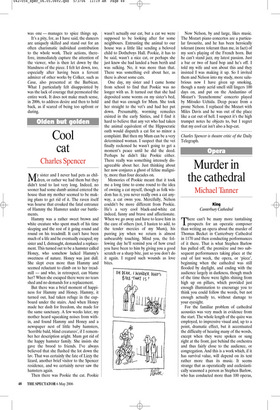Missing erotica
Giannandrea Poesio
Companhia de Danga; Deborah Colker
The Barbican
Dance and eroticism have long gone hand in hand. For centuries, moving bodies have been regarded as arousing and dangerously tempting. Twenty-first-century adverts still draw upon that popular equation and delve more or less seriously into the intrinsic sensuality of dance, whether it be ballet, modern or even street dance. Yet the continuous bombardment of alluring images we are subjected to every day has somewhat tempered the erotic impact of those dancing bodies. Thanks to a multiplicity of urban, suburban, extra-urban, postmodern and transmodern cultures and meta cultures, today we are far more used to the sight of an erotically moving, and often perfect, body than we were only 15 years ago. Iconographic and even performing taboos have rapidly waned within the same time span, with serious consequences for those who look to sensuality and eroticism as sources of inspiration for their creations.
Deborah Colker’s latest creation, Knot, is a fitting example. According to the programme note, the performance is her ‘attempt to physicalise the philosophy of desire’. An excellent idea, given the popularity of ‘the philosophy of desire’ and all its related issues these days among highbrows and lay people alike. It’s a pity that the promised physicalisation results in a bland and repetitive display of dance ideas that do little or nothing to stimulate or even symbolise desire. Not even the first part of the show, dominated by a multitude of ropes dangling from above and desperately trying to hint at notions of bondage and S&M practices, seems to have anything to do with the notion of yearning or even forbidden pleasures. Forget unsettling scenarios such as the one portrayed in Stephen King’s 1992 Gerald’s Game or the unforgettably intoxicating and overwhelming 1988 Liqueurs de Chair by Angelin Preljocaj, arguably the best dance performance to address and portray taboos and pervy sexual practices. In the first part of Knot the dancers interact with themselves and the ropes with breathtaking technical precision and extreme physical bravura. But there is no sensuality, no eroticism, no subtle, ambiguous longing. Not even the exposed flesh acquires or carries erotic meaning. What should lure and provoke the viewer’s gaze becomes too soon a mere asexual, nonsensual, dry spectacle of muscles tensing and relaxing.
Physical prowess, one of the most distinctive traits of Colker’s performancemaking, is also central to the second section of the work. Although the choreographic construct and the movement patterns are better than those seen in the first part, the idea of encasing most of the action in a kind of human aquarium soon becomes wearisome, and impinges greatly on the dance ideas. Despite a few moments in which the dancers interact through the Perspex walls of the aquarium in what seems to be a choreographic stylisation of a sex party, their cavorting in and out the encased space adds little to the general feel and certainly does not provide the frisson one longs for all evening. Not even the laughably timid reference to gay male sex — a classic shocker, if ever there was one — manages to spice things up.
It’s a pity, for, as I have said, the dancers are uniquely skilled and stand out for an often charismatic individual contribution to the whole work. Their actions, therefore, immediately capture the attention of the viewer, who is then let down by the blandness of the piece. I felt let down, too, especially after having been a fervent admirer of other works by Colker, such as Casa, also presented at the Barbican. What I particularly felt disappointed by was the lack of courage that permeated the entire work. It does not make much sense, in 2006, to address desire and then to hold back, as if scared of being too upfront or daring.















































 Previous page
Previous page